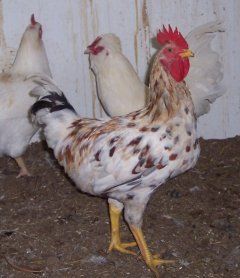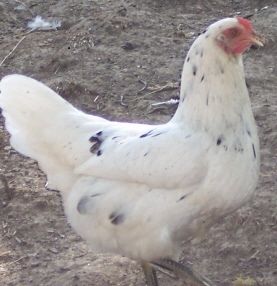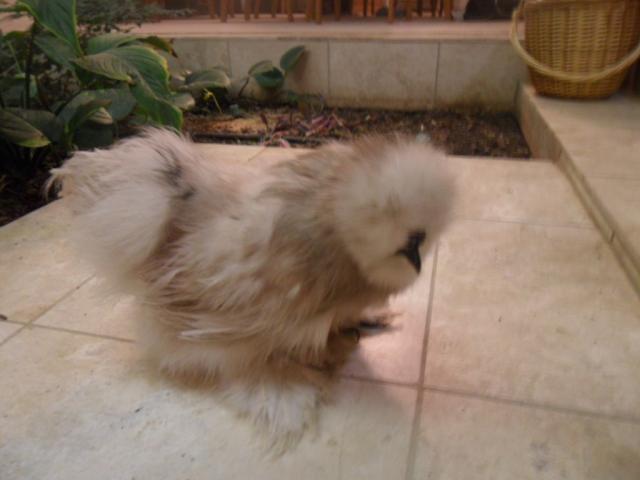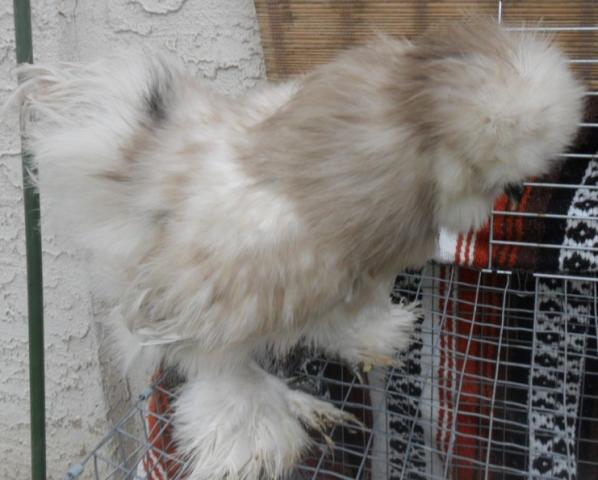Quote:
I know I will repeat some information in previous posts so bear with me. This is a long thread so it would not hurt repeating the information.
Paints are a heterozygous dominant white or only carry one dominant white gene. Under the white they are most likely extended black at the E locus. Birds can be black and carry another allele at the E locus but from what I can gather from the posts they are extended black.
I have worked with dominant white for years and it is a quirky gene. You are not going to get the same pattern of black markings in each bird because of the nature of the dominant white gene. I have even had heterozygous birds that were a very light gray color over the entire body.
You would only want to breed paint to paint or paint to black. Breeding paints to variates that carry gold would cause problems. The problems would be buff or red and black spots on a white ground color.
Here is an example of a red and black paint. You would get this color pattern if a person were to breed a black tailed red to a paint and then did some additional crossing with the offspring.

Here is an example of a paint.

To produce a paint, the breeder wants a solid black bird under the white- that is why it is best to breed paint to paint or black to paint. If a person were to breed to a partridge this would introduce the gold gene to the offspring. The paints would start to show buff colors on the breast, head and neck in the females and the males would start to look similar to a red pyle.
Any red or red shades ( buff etc. ) would begin to leak through the white. You could get strong spots of red or the red will sometimes appear as smear of red on white( best way I can explain the color).
If a person is dealing with dominant white the following ratios apply to the crossings. To get the ratios you would have to hatch a large number of chicks. I believe some one posted this earlier but I am going to post the information again.
Black X paint = 50% black and 50% paint with a few solid white
paint X paint = 25% white, 25% black and 50% paint You will most likely get a higher percentage of white because some heterozygous dominant white birds can be solid white. This of course would decrease the percentage of paints.
If red begins to show in the paints- back cross the paint to black to eliminate the red in future offspring.
Tim
I know I will repeat some information in previous posts so bear with me. This is a long thread so it would not hurt repeating the information.
Paints are a heterozygous dominant white or only carry one dominant white gene. Under the white they are most likely extended black at the E locus. Birds can be black and carry another allele at the E locus but from what I can gather from the posts they are extended black.
I have worked with dominant white for years and it is a quirky gene. You are not going to get the same pattern of black markings in each bird because of the nature of the dominant white gene. I have even had heterozygous birds that were a very light gray color over the entire body.
You would only want to breed paint to paint or paint to black. Breeding paints to variates that carry gold would cause problems. The problems would be buff or red and black spots on a white ground color.
Here is an example of a red and black paint. You would get this color pattern if a person were to breed a black tailed red to a paint and then did some additional crossing with the offspring.

Here is an example of a paint.

To produce a paint, the breeder wants a solid black bird under the white- that is why it is best to breed paint to paint or black to paint. If a person were to breed to a partridge this would introduce the gold gene to the offspring. The paints would start to show buff colors on the breast, head and neck in the females and the males would start to look similar to a red pyle.
Any red or red shades ( buff etc. ) would begin to leak through the white. You could get strong spots of red or the red will sometimes appear as smear of red on white( best way I can explain the color).
If a person is dealing with dominant white the following ratios apply to the crossings. To get the ratios you would have to hatch a large number of chicks. I believe some one posted this earlier but I am going to post the information again.
Black X paint = 50% black and 50% paint with a few solid white
paint X paint = 25% white, 25% black and 50% paint You will most likely get a higher percentage of white because some heterozygous dominant white birds can be solid white. This of course would decrease the percentage of paints.
If red begins to show in the paints- back cross the paint to black to eliminate the red in future offspring.
Tim











